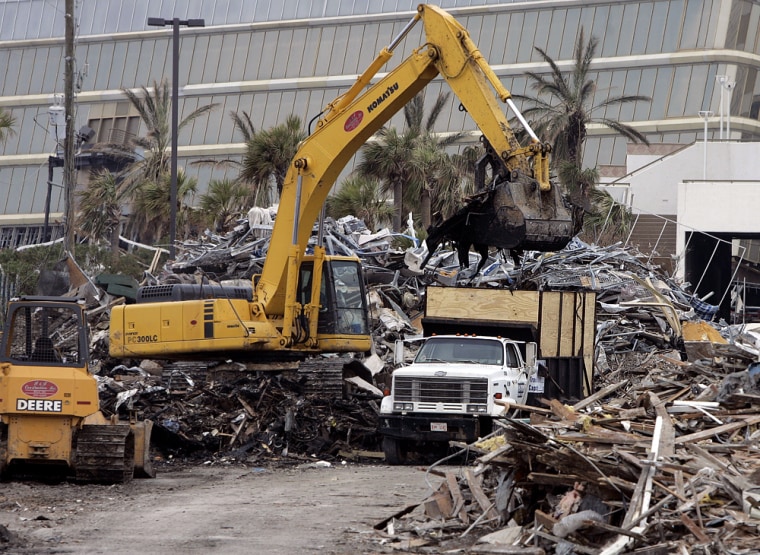In a sandy construction site on the outskirts of town, more than a dozen trucks wait their chance to unload tree limbs and feed a huge bonfire that will burn from dawn until dusk every day for months.
In an abandoned tanning salon a few towns away, members of the Army Corps of Engineers kneel on the floor and look for available dump sites on maps laid on the carpet.
The Hurricane Katrina cleanup represents the biggest waste-disposal job in U.S. history, dwarfing in volume the debris carted off after the World Trade Center’s twin towers fell in 2001, officials said.
In the past few days, a loose network of contractors, government officials and out-of-work residents has sprung up to scoop, sort, grind and dispose of not just mountains of garbage, but whole mountain ranges of the stuff.
With entire communities reduced to rubble, engineers and environmental officials are scrambling to figure out where to put the debris. The largest dump site in southeastern Mississippi is already nearing capacity.
Enough to fill Georgia Dome many times over
Zogas Costas, the Army Corps engineer leading the cleanup in two southeastern Mississippi counties, said aerial photos suggest Mississippi has as much as 50 million cubic yards of debris — enough to fill Atlanta’s Georgia Dome nearly 13 times.
Louisiana, where thousands upon thousands of flooded-out homes in and around New Orleans will probably have to be razed, could have nearly as much.
“I was at 9/11. That was done in about four months,” Costas said. “This is going take longer.”
The cleanup in Mississippi follows a process that will probably be adopted in Louisiana as well.
First, construction crews use bulldozers and backhoes to load trucks with debris and haul it to “reduction sites.” There, most household debris — mattresses, vinyl siding, toys, rusted metal, lumber and the like — is separated out and ground up together. Trees, shrubs and brush are either burned or turned into wood chips.
Mazardous materials
Air conditioners, refrigerators and other items that could contain hazardous materials such as coolant are set aside. The dangerous substances will be removed before the items are ground up, too.
Officials hope to recycle the wood chips for landscaping or road building. The ground-up plastic and metal will be sent to landfills.
To handle the load, Mississippi will need dozens of new landfills and reduction sites amounting to hundreds of acres, said Mark Williams, a program manager with the state Department of Environmental Quality.
Some closed sites may be reopened, existing landfills may be expanded, and people with land to spare have called the state, looking to get in on the action.
“Land is going to be at a premium,” Costas said. “It’s a huge, enormous task.”
Approving such a site normally takes months, but environmental officials have speeded up the process.
Sen. James Inhofe, R-Okla., is preparing a bill that would allow the Environmental Protection Agency to waive certain environmental rules during the cleanup, though EPA Administrator Stephen Johnson said there is no immediate need for such waivers.
As for how long the cleanup could last, Costas said much of the debris will be removed from the streets within three months. But burning and grinding it all could take years.
“I’ll be here until February, when my kid’s born,” said Chris Eoff, a heavy-equipment operator from Waco, Texas, who is working at a reduction site in Gautier. “Then I’ll take a couple weeks off and come back.”
